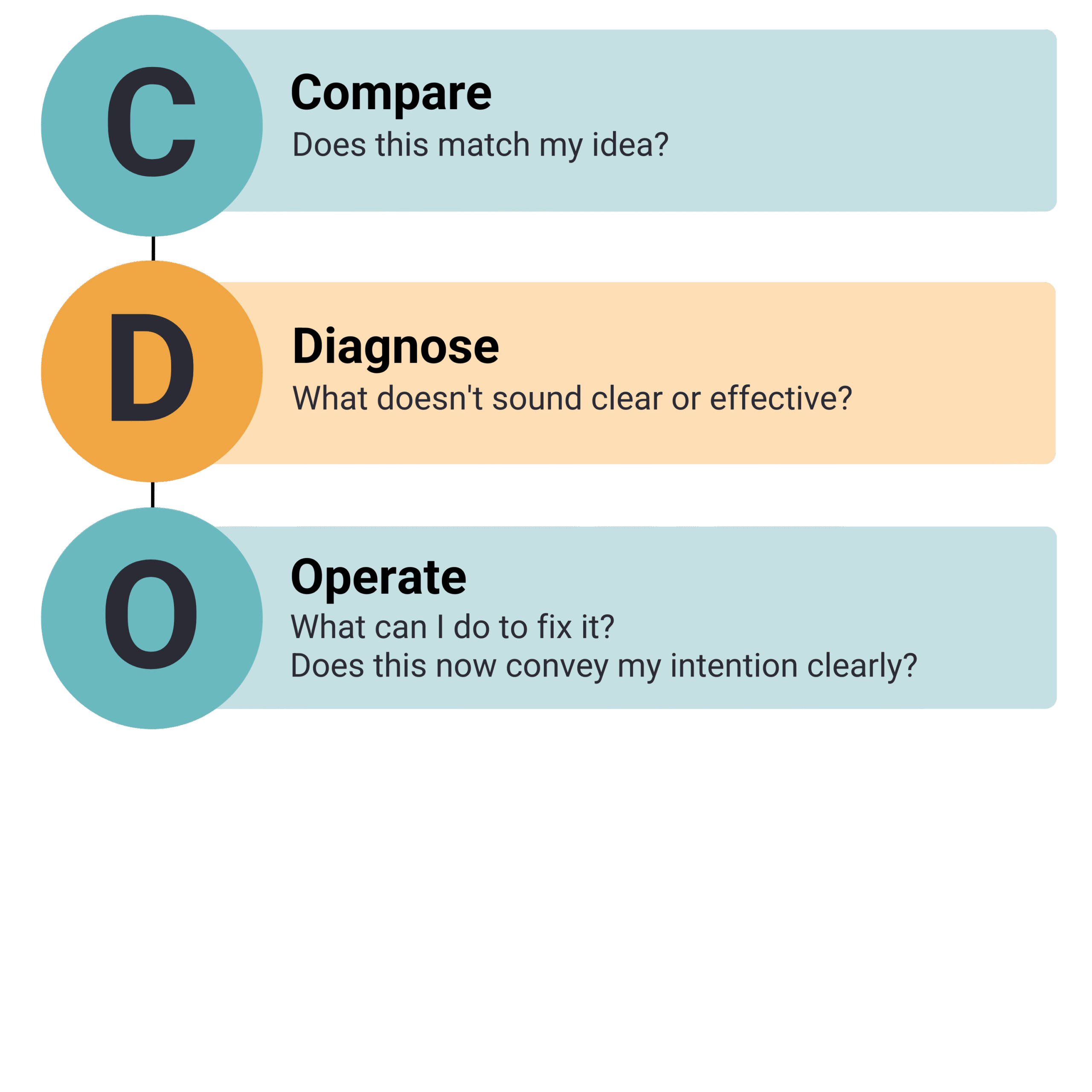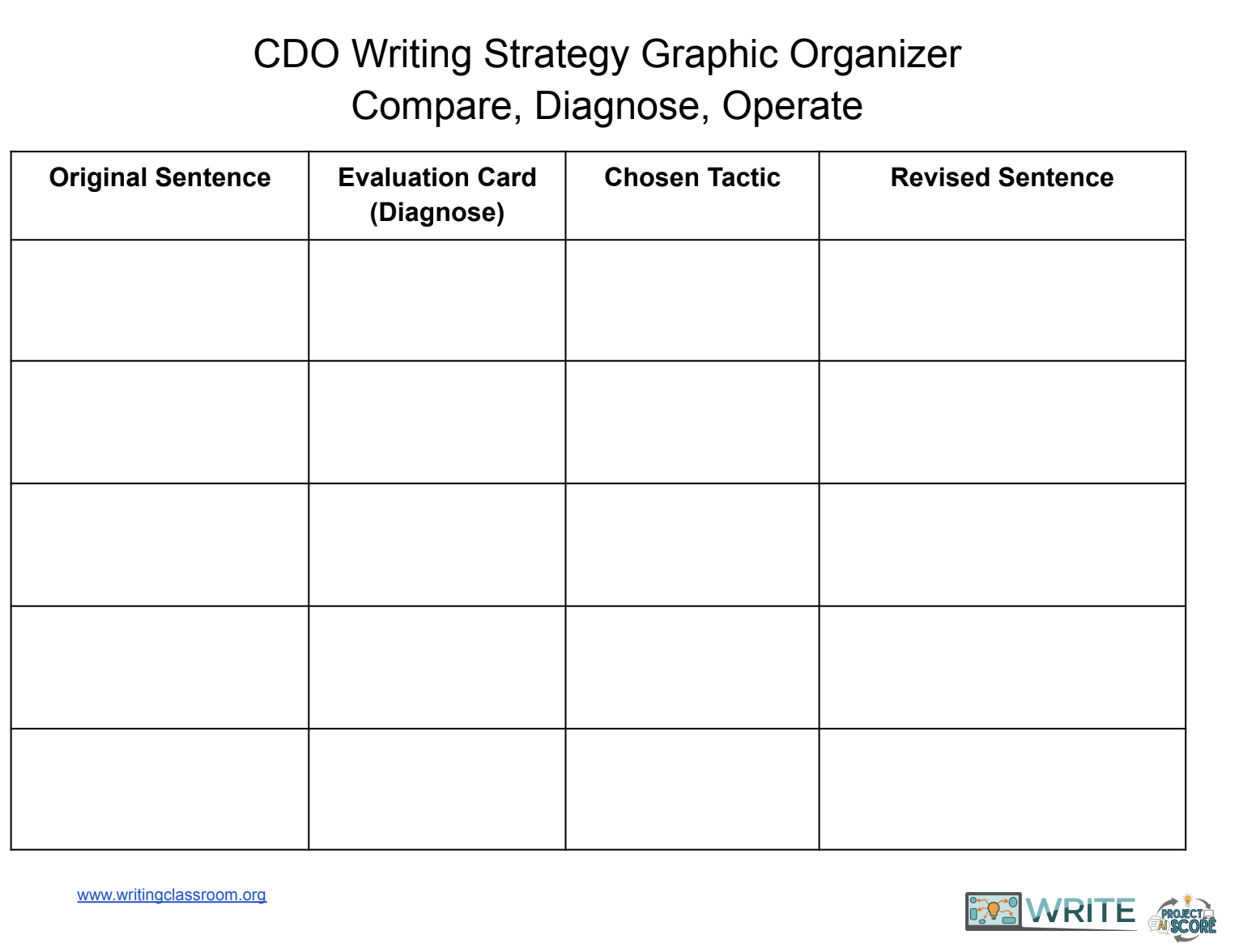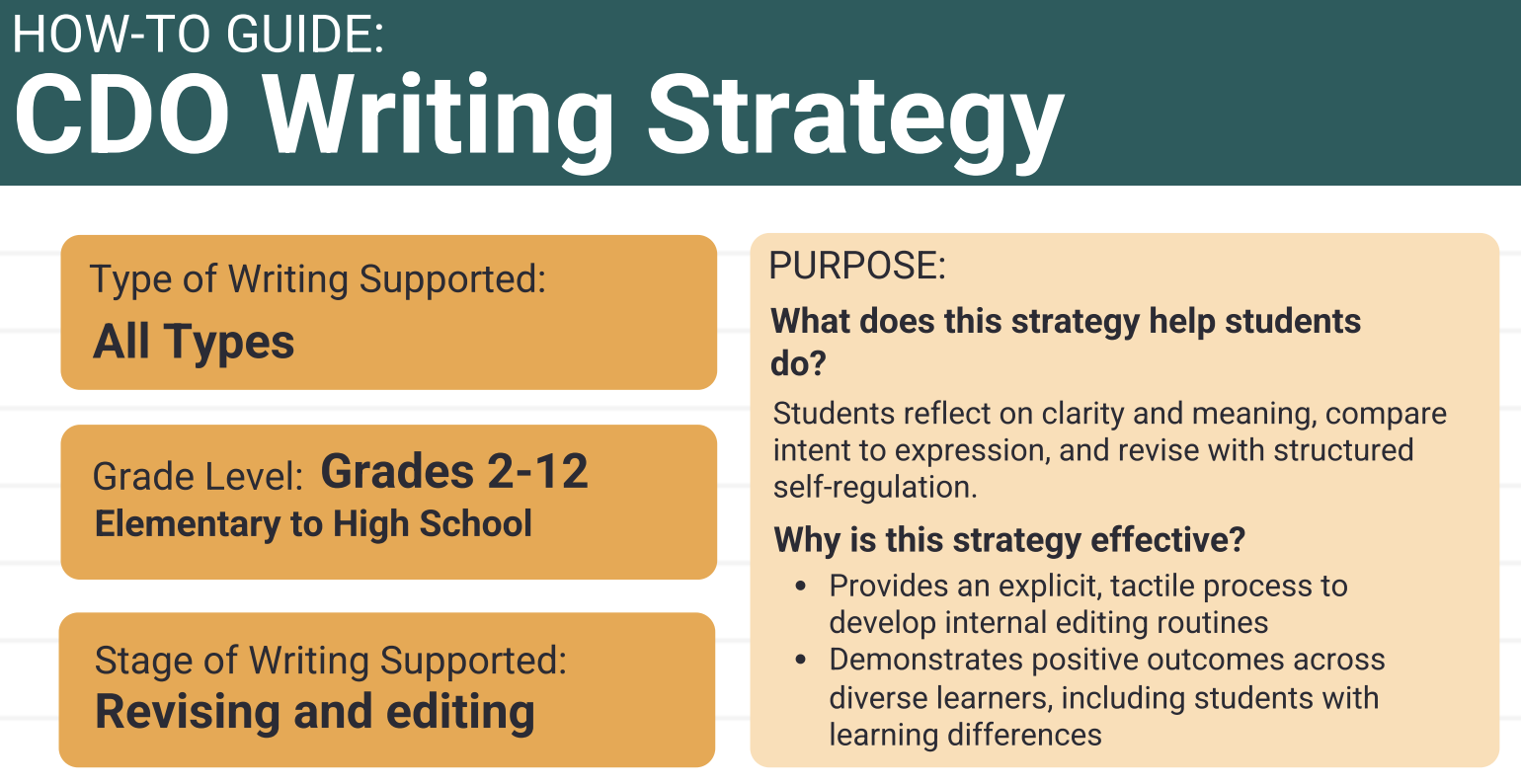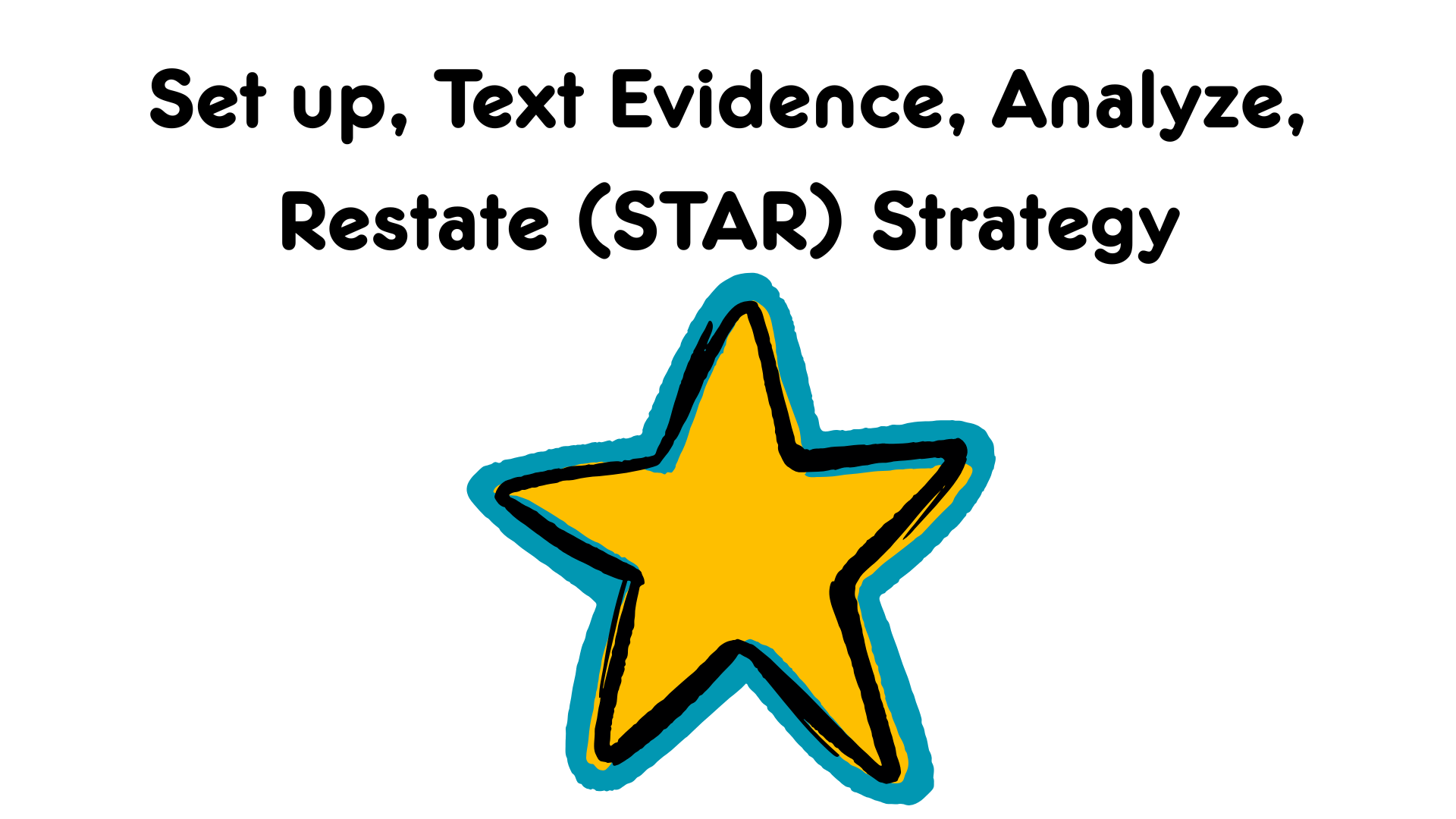Compare, Diagnose, Operate (CDO) Strategy
Strategy Parameters
- Genres: Persuasive, Narrative, Informational
- Grade Levels: 2-12
- Writing Process Stage: Revising & Editing
At-A-Glance
This revision strategy promotes active student involvement in revising their writing by using structured, tactile steps to evaluate clarity, coherence, and audience fit, thereby building metacognitive awareness and strong internal editing habits.

Overview
The strategy provides a concrete, repeatable process that encourages students to compare their intended message with the actual written output, significantly sharpening their ability to revise with purpose. By systematically guiding them to evaluate key elements like structure and audience fit, the method fosters metacognitive awareness and improves the overall quality of their communication. This structured and accessible approach is particularly beneficial for a wide range of students, including those with learning differences, because it supports self-regulation and informed decision-making during the revision stage.
Purpose and Benefits
This strategy helps students:
-
Take a more active and engaged role in the often-passive process of revising their own drafts.
-
Develop metacognitive awareness by reflecting on the gap between their thoughts and their written expression.
-
Systematically evaluate critical writing aspects such as coherence, structure, and audience appropriateness.
-
Build strong internal editing habits through the repeated application of concrete, tactile steps.
-
Improve self-regulation and decision-making skills by breaking complex revision into clear, manageable steps.
Why It's Effective
- Metacognitive Bridge: It explicitly prompts students to compare intention versus outcome, which is vital for developing purposeful revision skills and deep self-awareness.
- Tactile and Concrete: The structured nature and focus on clear, physical steps (implied actions) make the abstract concept of revision more tangible and less intimidating.
- Comprehensive Focus: It forces students to look beyond grammar errors to evaluate higher-order concerns like structure and audience alignment.
- Accessibility: The clear, repeatable steps inherently support students with learning differences by providing the scaffolding necessary for self-regulation and successful task completion.
- Habit Formation: Consistent use of the structured process ensures that strong internal editing habits are developed and automatically applied across various writing tasks.
Downloads




